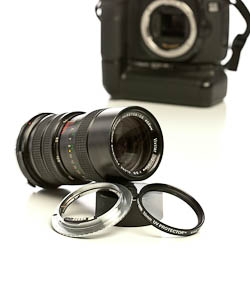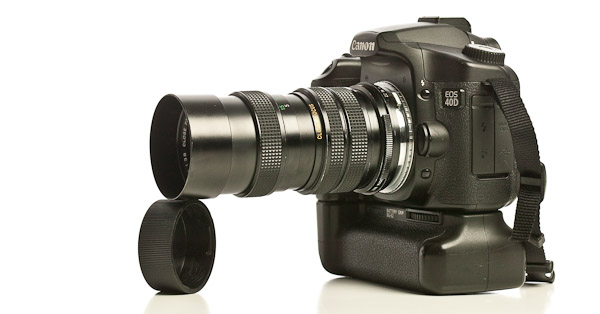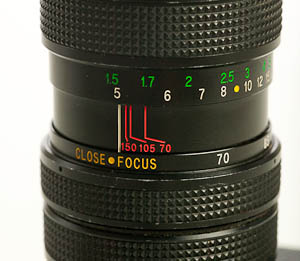
Vivitar 70-150mm f3.8 Close Focusing Zoom. Not your ordinary "cheap" 3rd party lens.
|
||
|---|---|---|
Specs:
I've encountered many Vivitar lenses, and I know that Vivitar was a marketing firm and merely sold third party lenses under their own name. Some were good with so-so quality, and never really compared to the likes of Canon or Zeiss. |
 |
|
I've seen many of these 70-150ish zooms come and go on ebay, and was never really interested. However, I happened to notice this one with a single bid of 99 cents, and I placed mine at $2 and forgot about. Turns out I won. Frankly I wasn't all that excited as I expected this to be a junk lens, and would have passed had the offer been $10 or higher. However, upon receiving it, all that changed. It's a solid and confident build, with movements like butter and zero slop. Mounting this onto my 40D via an OM/EOS adapter, and peering through the viewfinder, I found this lens to be a sharp performer. Side note: Please understand two things: 1) that much of my information is merely compiled from other sources on the net, and 2) that I really don't do color or chart tests, or anything much with regards to scientific tests. Instead, what I bring to the table is verifible evidence of how a lens performs in an everyday application as I believe that is what matters most. Despite the reputation or source of my information, such things do not apply to all lenses, as both time and use can take their toll. The only way to know for sure is to buy it and try it. Along the way I've found some dogs, and surprisingly, a few useful tools that I have pressed into faithful service, thus saving me hundreds of dollars over new, including a few priceless gems that will never be duplicated. Ok, back to the lens...
This particular model was manufactured buy Kino-precision (or Kiron in the US). Kino is rumored to have been formed by a group of ex-Nikon engineers (Hmmm seems a number of lens companies were started that way). Regardless, their quality shows and it's no wonder they make lenses for Nikon as well. In the early 80's Kiron ventured into marketing their own lenses, even while still making lenses for Vivitar. Apparently they got fed up with Vivitar's constant changing of orders and design specs, and hiring on other OEMs in the process. They did quite well in the first year, and peaked at being the 4th most popular lens builder in the world, ( Kiron marketing success story). Kiron lenses also had a cult following (Cult lens page), and like so many third party lens OEMs, just faded away from the scene. This particular copy is in pristine condition. The focus and zoom rings are very smooth and with no slop or creep. The images are a little soft at f3.8, which is good for portraits, and get very sharp at f5.6, and I can clearly define the focus' sweet spot even with the 40D's standard matte screen. Also noteworthy is that this lens is sharp even at f22! (I have already verified this in the studio). On the down-side, if you consider it that, it's a slow lens at f3.8 and not the best choice for indoor use. Generlly it's a good walk around lens for open spaces such as parks and landscapes. It's a little on the long side for 1.6x crop sensor cameras though, and not the best choice for tight spaces or crowded venues and cities. It also has this nifty and utterly useless built in lens hood. The lens flares easily, but color reproduction is otherwise good, and chromatic abberation is also well controlled, at least this copy is still within factory spec. It's a two-touch, vari-focal zoom, that is, every time you adjust the zoom, you have to refocus the shot and that could be a little slow or cumbersome for faced paced shooting or event use. On the plus side, it's a constant aperature of 3.8 throughout it's zoom range, and being vari-focal, behaves more like a prime lens and is generally sharper than the zooms of it's day. An updated model also exists that uses a single ring to push and pull the zoom while also turning for focus. Honest marketing: "close focus", not 'Macro'. Vivitar was wise in marketing this a "close focus" lens, since the the 'macro' feature of this lens at 1:4 is rather limiting, and is ok for flowers, etc. However, I am still quite happy with my $1.04 investment as a general use lens. -Keep Shooting |
||





